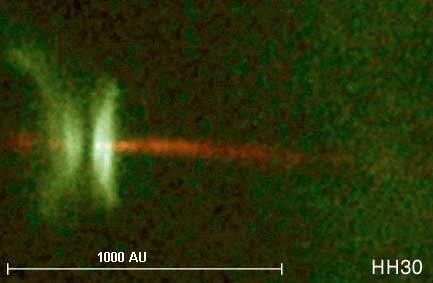Accretion and Ejection of Astrophysical Plasma |
 |
 |
 |
Young Stellar Objects (YSO): low-mass forming stars still embedded in their accretion disk.
Galacic compact objects : neutron stars, some dwarfs and black holes with mass less than a hundred solar masses.
Active galactic nuclei: supermassive black hole hosted in the center of some galaxies.
There are also lots
of more "exotic" systems that may be
sorted into the MAES class: gamma-ray bursts, planetary nebula, pulsar
....
For more informations, you
should go to the LAOG's High Energy team web
page
presenting these objects : SHERPAS
The next paragraph deals with the numerical MHD simulations done with the Versatile
Advection Code (VAC) designed by G. Toth and R.Keppens. This code is
devoted to HD and MHD simulations in any dimensionality (1D, 1.5D, 2D,
2.5D
or 3D) and geometry (cartesian, cylindrical or spherical). For more
detail go to the VAC page !

In
a serie of two papers, R. Keppens and I have presented 3D
axisymmetric MHD computations of such systems. The aim of these
simulations was to study the evolution of a resistive accretion disk
(with no
initial outflows) threaded by a large-scale magnetic field.The basic idea is that the rotation of the disk is twisting the magnetic field lines anchored on the disk. This twisting provoked a magnetic retroaction on the plasma which is slowed down, allowing then the accretion. In parallel, the magnetic twisting generates a MHD Poynting energy flux in the jet accelerating the small fraction of mass extracted from the disk by the subtle balance between magnetic and thermal pressures. For a funny illustration, click on the picture to get a Quicktime movie of what one would see if one was flowing along the streamline displayed on the picture. For more informations or details, you can first retrieve the papers here or contact me directly by mail. |

|
 |

